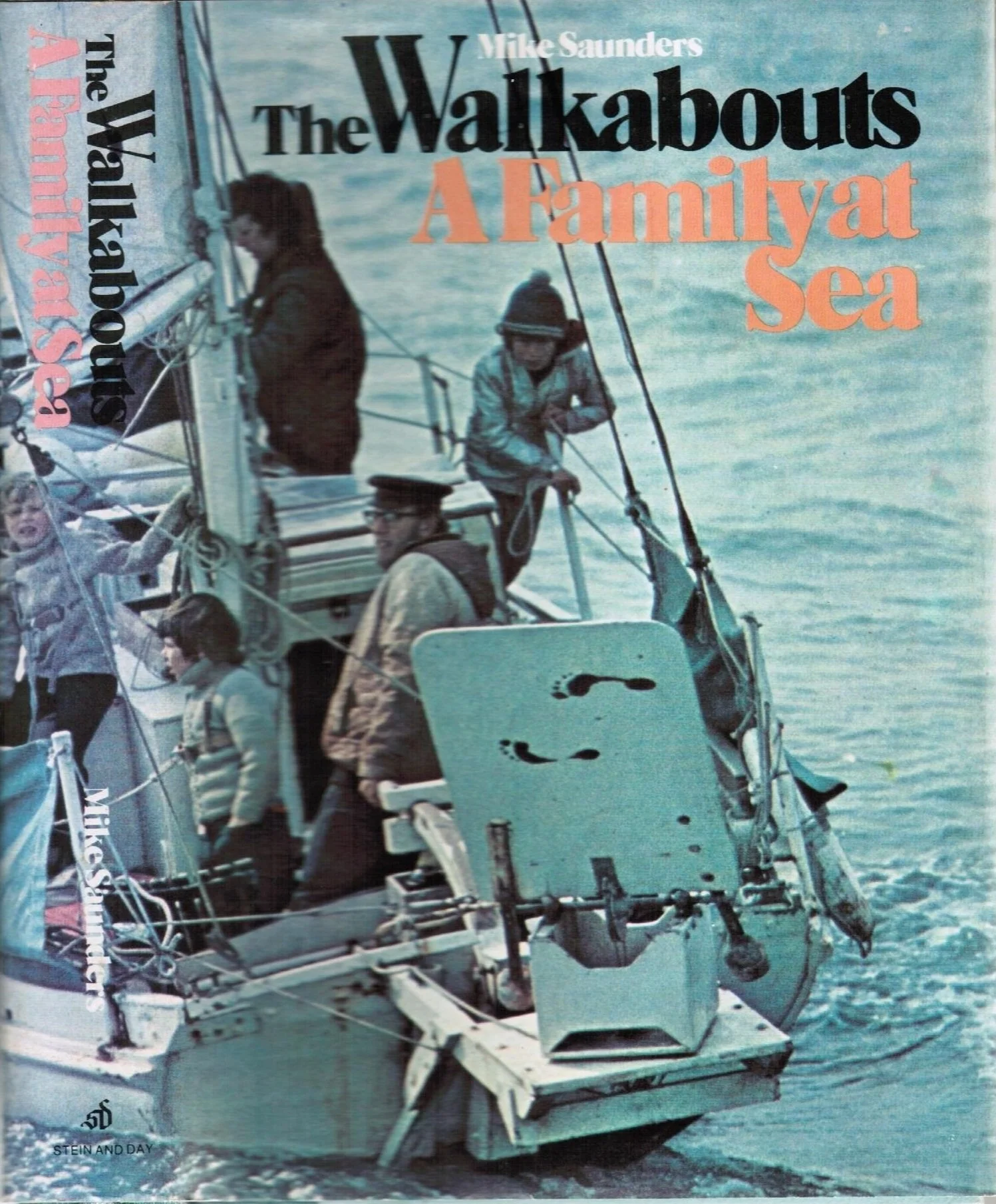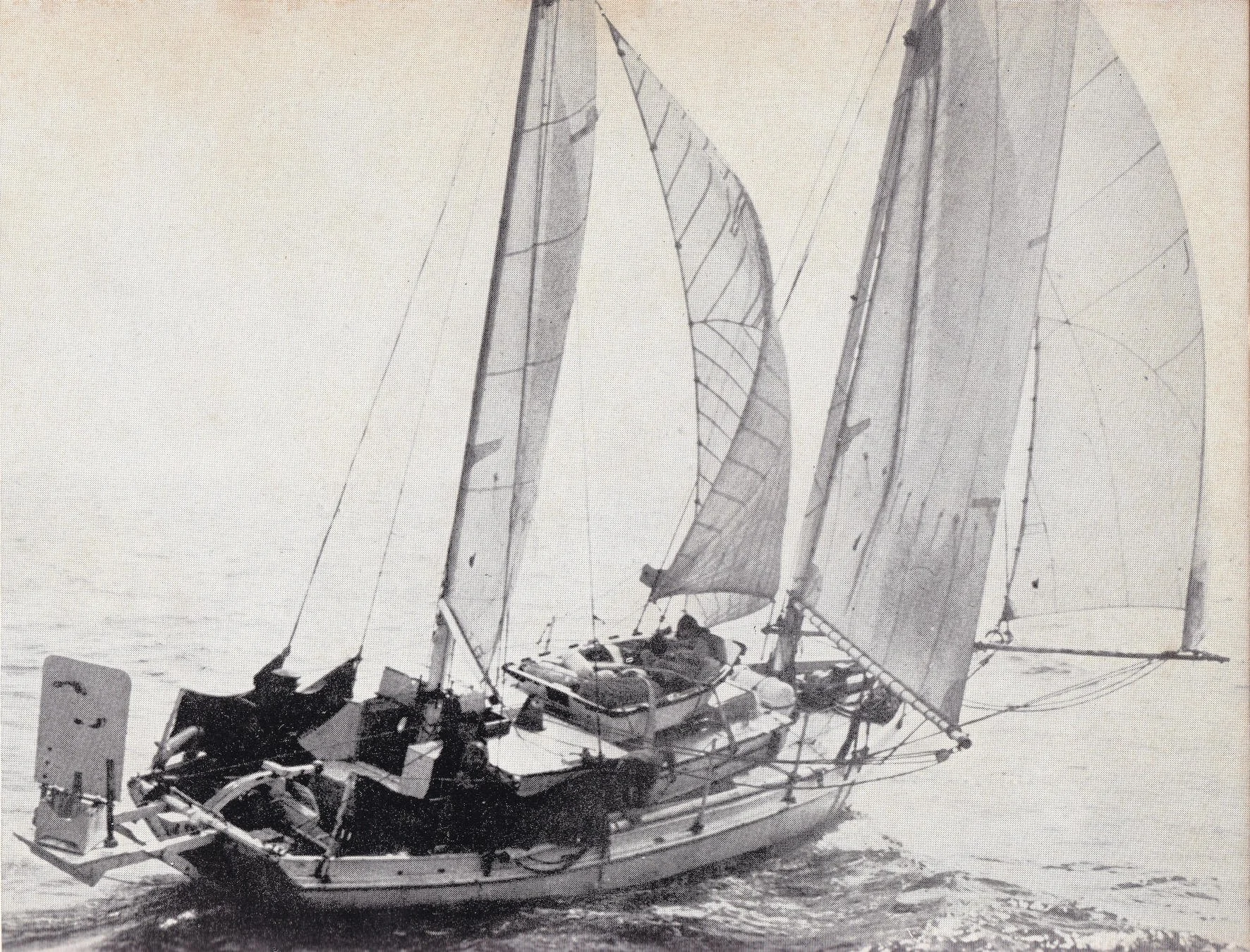A Family at Sea
Thanks to Graham Cox for this wonderful book review. A copy of “Sailing All Seas in the Idle Hour” is on his way to him now!
WALKABOUT is a 32', 12-ton, Alden-designed ketch with strong links to Australia. A sistership to W. A. Robinson's famous SVAAP, it was built from Jarrah in Freemantle, Western Australia, by two brothers, the Driscolls, launched in 1952, and sailed to Durban, South Africa, in 1954, where they sold it. I first came across a reference to the boat in Eric Hiscock's Voyaging Under Sail in 1968, but could find no trace of it in Durban during my teenage years there, and nobody I spoke to knew where the ship had gone. People who had sailed on WALKABOUT out of Durban said it was massively strong, quite fast, and very wet at sea. It had a reputation for winning heavy weather offshore races.
In 1972, the boat turned up in Durban again, sailed by a couple from what was then known as Rhodesia, and their four young children. They had bought the boat in a remote area of Mozambique, and fitted it out there with great difficulty, due both to distance and the geopolitical realities of two countries sliding into civil war. Reading of their tribulations makes you wonder how they ever got away, and also assures you that people with such determination were sure to succeed in their endeavours.
They were bound for Cape Town, Rio de Janeiro, the Caribbean and ultimately, England. I saw them again in Cape Town later that year, when I was leaving South Africa to migrate to Australia. In 1976, I was walking past a bookshop in Cairns, Far North Queensland, Australia, on my way back to Sydney from Rabaul, Papua New Guinea, after sailing David Lewis’s yacht, ICE BIRD, across the Coral Sea, when I saw Mike's book in the window. In a rush of adrenaline, I went into the shop and bought it. In those days, I bought every ocean cruising book I could lay my hands on, but it became one of the select few that I would never part with.
Besides the drama of undertaking such an adventurous cruise with four young children, the book provides a wonderful portrait of the dynamics of living together in such a small space for a significant period of time.
WALKABOUT, a tight squeeze in the bunks
It wasn't always easy, but Mike writes with such affection for his wife, Liz, and the children, Kevin, Mark, Bruce and Rachel, that it made me dream of being a part of their family, or having a salty gaff-rigged ketch and a brood of wild children myself. The youngest child, Rachel, had to sleep on the engine box, and complained bitterly when the rest of the crew kept invading her space! Photos of them all in the cabin together demonstrate just how crowded it was.
Walkabout dinner time
This was an age before helicopter parenting became a thing, but even so, the Saunders children were given a remarkably free rein, and were often riotously exuberant. WALKABOUT's dinghy, known as CRAWLABOUT, and deeply loved by the children, was stowed upright on the cabin top, and was a favourite haunt of the kids, where they read, played games, and indulged in flights of fancy, often imagining great voyages of their own. Once, on the way to Cape Town, WALKABOUT was overtaken by a gale while the children were in the dinghy. By the time Mike and Liz had the rig sorted out, the kids were so excited that getting them under control and safely down below seemed more challenging than dealing with the weather.
I love the photo in the book where the kids are hanging out over the side of the boat in their harnesses, playing a game called bottom s'ils, where their bottoms got dunked into the sea as WALKABOUTrolled down the trades.
Walkabout No helicopter parents in sight. Helicopter kids maybe..
The two older boys were working members of the crew, standing watches and assisting with maintenance and navigation, while the younger two occasionally assisted. They all became resilient and self-confident, making friends in various ports, handling foreign currencies and adapting to local customs.
The voyage was only intended to last a year, except that the youngest boy, Bruce, fell and broke his wrist in Cape Town. Winter was already upon them, so they decided to stay until the beginning of summer. Mike went off to work and the boys demanded to go to school. Eventually, on 13 November 1972, they set sail for Rio de Janeiro via Saint Helena Island. It took some time to adjust to being at sea again, and to the motion of rolling down the trades, but eventually they all got their sea legs, and Mike and Liz worked out how to get the best out of the boat. From Rio, they sailed up to the Caribbean and on to the Azores Islands, then finally to England. Mike paints alluring portraits of all these places, and of the people they met along the way.
One of the best aspects of The Walkabouts is the author’s sense of humour, and how he captures the excitement of the children when special occasions occur, like landfalls and birthdays. They spent Christmas at sea between Saint Helena Island and Rio de Janeiro, and the build up to the day is hilarious. The day itself sounds like great fun, with the children putting on a play that they wrote themselves, and a great feast. Because I am a solo sailor, reading this book can sometimes make me a little wistful.
He also writes with some detail about WALKABOUT's unusual ketch rig, which had a gaff mainsail and a bermudan mizzen with a mast the same height as the mainmast. He came to love this rig, unlike the Driscolls, who reported to Eric Hiscock that the mizzen was useless and that they wanted to convert the boat to a sloop. Mike Saunders would have been grateful that they didn't. He found that by rigging a vang from the end of the mainsail's gaff to the mizzen masthead, he could prevent the gaff from sagging to leeward, and make the boat perform well to windward. Off the wind, he sometime flew a squaresail, and at other times a mizzen staysail, noting that the options for adjusting the rig and the centre of effort were almost limitless, and that each sail was small enough to be easily managed by one person.
WALKABOUT close reaching. Note the vang from gaff to mizzen head
Ultimately, The Walkabouts is a lively, entertaining and informative read that gives the reader a clear insight into the realities of cruising long-distance on such a small boat with a large family, in the days before modern communications and navigation systems came along. By the end of the book, you feel as if you know these people personally, and that WALKABOUT must be just about the ideal small bluewater cruising yacht. Or at least I did.
If you feel inspired to send us a review of your favourite maritime book just click HERE





